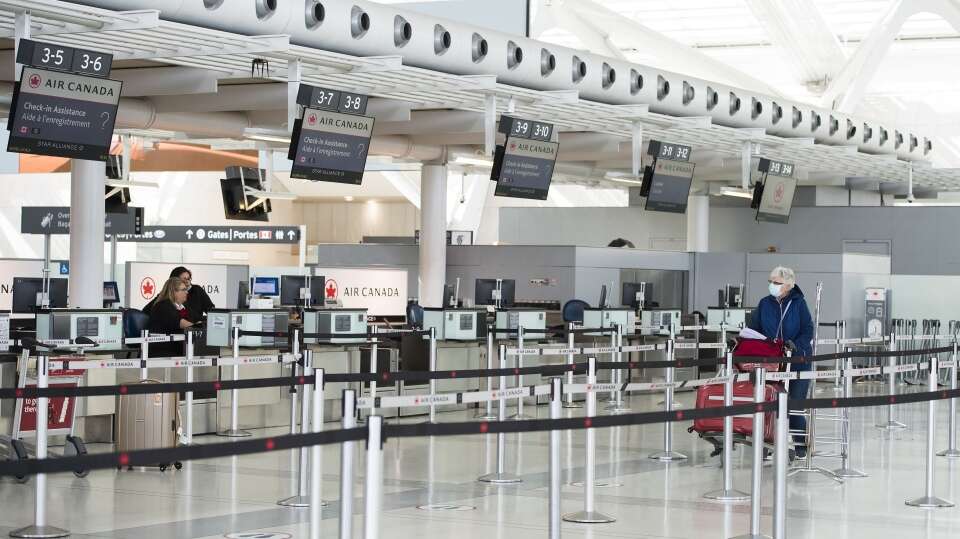Arriving in Canada marks the beginning of an exciting journey, but it also involves the process of entering the country through a designated Port of Entry (POE). Understanding what a Canada port of entry entails and how to navigate through it can significantly ease your entry into this beautiful nation.
What is a Canada Port of Entry?
A Canada Port of Entry serves as the official entry point designated by the Government of Canada for individuals arriving by air, land, or sea. It’s usually the first location where travelers touch Canadian soil, such as airports or land crossings. For instance, if your flight lands in Vancouver but your final destination is Winnipeg, Vancouver International Airport becomes your port of entry.
The process at a Canada Port of Entry:
Upon arrival, every individual undergoes an examination conducted by a Border Services Officer (BSO) from the Canada Border Services Agency. This examination involves presenting identification documents, responding to queries, and providing personal information to determine admissibility into Canada. Expect your passport to be stamped as confirmation of your entry. If no stamp is given, you can request one before leaving the POE.
Preparation Tips for Entry:
To ensure a smooth entry process, preparation is key. Here’s a checklist of essentials to have ready:
- Documentation: Carry necessary documents like a valid passport, a letter of introduction or study permit (if applicable), a temporary resident visa or electronic travel authorization (if needed), proof of financial support, proof of tuition deposit, proof of acceptance or enrollment, and any other documents advised by immigration authorities.
- Inventory List: Prepare a detailed list of personal items you’re bringing along with their estimated values (provide two copies).
- Information Review: Familiarize yourself with the Canada Border Services Agency’s visitor information here.
- Outgoing Flight: Have an outbound flight booked to your final Canadian destination, even if planning a short stay elsewhere initially.
- Anticipate Questions: Be ready to answer queries regarding your plans and intentions during your stay in Canada.
Am I guaranteed entry into Canada?
As an international student, entry into Canada isn’t guaranteed, irrespective of your status as a new or returning student. Your admissibility is assessed by a Border Services Officer (BSO) based on various factors. To be eligible, you must possess valid immigration documents, maintain good health, demonstrate sufficient funds for sustenance, have plans to exit Canada by authorized deadlines, and not fall under inadmissibility criteria. Additionally, proving your genuine intent as a student is crucial; hence, expect questions regarding your educational pursuits and the presentation of acceptance or enrollment documents.
Bringing Items into Canada (New Students):
When entering Canada, you can bring personal items for your use, like personal electronics, clothing, or a vehicle. Completing a CBSA Declaration Card to declare your imported items is mandatory for air travel. Prepare a detailed list of these items, including their approximate values and specifications, and keep two copies handy for presentation to the Border Services Officer.
Certain goods are restricted from entry into Canada, such as those intended for other Canadian residents, business purposes, gifting, abandonment, or items on the prohibited or restricted list.
What to Expect at a Canada Port of Entry (New Students Arriving for the First Time):
Pre-Arrival:
- Air Travel: Complete the CBSA Declaration Card before meeting the BSO.
- Land Travel: Typically, no CBSA Declaration Card is needed.
First CBSA Examination:
- Present essential documents (passport, letter of introduction, if applicable, and CBSA Declaration Card) to the BSO. Expect questions about your purpose and the items being brought into Canada.
- You might be asked to show acceptance letters, proof of funds, or a list of goods.
Baggage & Secondary Inspection:
- Collect baggage after the initial examination.
- Show your CBSA Declaration card at the next checkpoint.
- A secondary inspection might occur if needed for further questioning or luggage examination.
- If deemed eligible, you’ll receive a study permit or entry as a temporary resident.
Exiting the CBSA area:
- After all examinations, proceed to your connecting flight or exit the POE.
Note: Expect the examination process at the port of entry to be time-consuming, lasting 1-3 hours. Plan adequate layover time for connecting flights, considering this duration.
Additional Note: Always stay updated with current entry requirements and guidelines, as policies may change. Being well-prepared and complying with immigration regulations significantly smooths your entry process into Canada as an international student.
What to Expect as a Returning Student
Returning students should anticipate a similar entry process at the Port of Entry (POE) as new students, as described previously. However, there might be slight differences in the documents required. For instance, returning students might need to present a valid study permit and temporary resident visa, if applicable, along with a current letter of enrollment, recent educational transcripts, and proof of funds.
It’s crucial for returning students to demonstrate compliance with the conditions of their study permit, including maintaining enrollment in studies, avoiding unauthorized work, and staying admissible. Failure to adhere to these conditions might result in an entry refusal. Generally, returning students often bypass ‘Secondary Services and Inspection,’ barring exceptional circumstances.
Bringing Items into Canada as a Returning Student
Returning students classified as temporary residents might qualify for a ‘personal exemption.’ This exemption allows the purchase of goods outside Canada for personal use without paying Canadian duties and taxes. However, exceeding this exemption might necessitate duty and tax payments. For example, goods exceeding the personal exemption limit ($800 CAN for absences over 7 days) could incur taxes upon re-entry.
The personal exemption varies based on the duration of absence from Canada:
- 24 hours or more: Claim up to $200 CAN worth of goods without paying duty.
- 48 hours or more: Claim up to $800 CAN worth of goods without paying duty.
- 7 days or more: Claim up to $800 CAN worth of goods without paying duty.
When entering Canada by air, completing a CBSA Declaration Card specifying the goods and their value is required.
Certain goods cannot be brought into Canada, such as items for use by other Canadian residents, business purposes, gifting, disposal in Canada, or items on the prohibited or restricted list.
For valuable items bought before or during your time in Canada, carrying receipts or documentation to prove their purchase outside Canada is advisable. This helps avoid confusion or unnecessary duties or taxes when re-entering Canada.
Traveling Within Canada
Students with a valid study permit or temporary resident status can freely travel within Canada without undergoing another POE examination. However, re-entering Canada from outside (for instance, by flying to Winnipeg via the United States) necessitates passing through a POE and undergoing examination once more.
Note: Nationals requiring a visa to enter Canada are generally exempt from holding a Temporary Resident Visa (TRV) when re-entering from the United States. However, holding a valid TRV is recommended for air travel to avoid potential confusion with airport personnel.
Understanding these nuances as a returning student can facilitate a smoother re-entry process in Canada and ensure compliance with customs and immigration regulations.
In essence, comprehensive preparation, compliance with regulations, and awareness of entry nuances are pivotal for international students entering or returning to Canada. With adequate preparation and adherence to guidelines, your entry into Canada can be an efficient and welcoming experience, setting the stage for a rewarding academic journey in this beautiful country.

